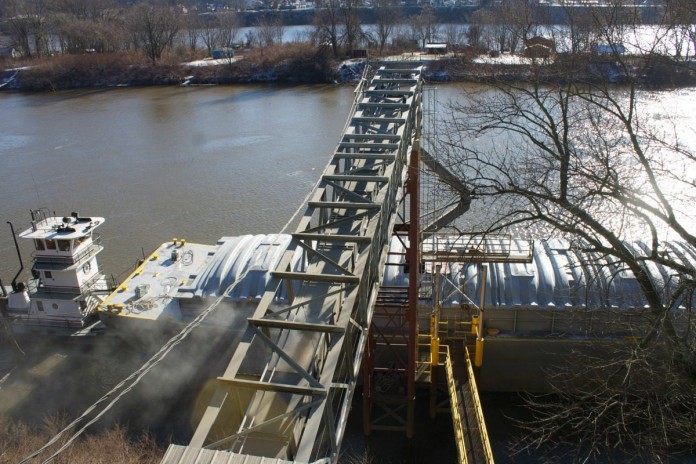SALEM, Ohio — An early snowfall isn’t the only “S” word, farmers are dealing with this late harvest season: Shipping grain across the United States is also a problem.
Slow-moving rail service
The U.S. Energy Information Administration reports the number of railcars hauling grain is up from last year by 15 percent, but some grain elevators say otherwise. Some have speculated the oil and gas industry is to blame for some of the backlog, which has increased by 13 percent since 2013.
According to the EIA, crude oil and petroleum products had the second-biggest increase in car loadings through the first 10 months of 2014, with these shipments occurring in parts of the country where there is also strong demand to move coal and grain by rail.
A report from the EIA shows there was an increase in the number of railroad carloads in most commodities. U.S. rail traffic, including car loadings of all commodity types, has increased 4.5 percent through October 2014, compared to the same period in 2013.
Impact in Ohio
Mike Badger, grain manager at Town and Country Co-op, said the Mansfield location has been an eyewitness to railroad delays.
“It’s pretty bad,” said Badger. “The railroad is just not performing as it should.”
Badger said the weather was to blame last winter for the railroad delays. However, the problem of getting grain to where it is needed by railroad car never ended.
When the railroad is not moving grain cargo as quickly as possible, the backlog impacts what some grain elevators can purchase and sell in the future, he explained.
For example, Town and Country’s Mansfield branch bought grain to load a railcar, but now the loaded car is waiting to be picked up. Until it is picked up, Badger said, the grain elevator can’t purchase grain for another railcar.
Badger said he has been told by the railroad that they simply don’t have the locomotive power or employees to pick up the railcar, and was told they have taken the power to other commodities.
Badger added that it is frustrating because there is plenty of supply, but grain elevators can’t get it to where it is needed since the railroads don’t have the engines. He said some grain elevators and feed manufacturers in the Southeast are forced to scramble because they have run out of corn, meaning delays for livestock producers.
No end in sight
Badger doesn’t expect the problem to get better any time soon, in fact he expects it to get worse now that winter weather has arrived, which hampers the railroad traffic.
Badger said he has been told that new engines are coming online to help move cargo but he has been hearing that for the past year.
According to the EIA, in response to shipper concerns over the slow movement of crude oil, coal, grain, ethanol, and propane, federal regulators are closely tracking service among the major U.S. freight railroad companies.
AAR
According to the Association of American Railroads,a trade organization representing railroad companies, America’s railroads are moving more traffic since the recession. In the first 10 months of 2014, total U.S. carload was 24.3 million units, up 4.5 percent over the same period last year and the highest year-to-date total since 2007.
A number of factors has resulted in capacity issues, including the fact the industry has gone from comparatively light to heavy traffic in a short period of time, something even many shippers did not forecast, along with shifting traffic patterns, according to the Association of American Railroads.
The Association of American Railroads claims that as a result of the capacity issues, the rail industry is working hard to address immediate shipping demands, as well as looking at longer-term network adjustments. To respond to the surging shipping needs of customers, railroads are taking steps to remedy the service challenges, including investing about $26 billion in 2014 on rail infrastructure enhancements, buying more equipment, like locomotives, and hiring thousands of new employees.
Barge traffic
Barge traffic heading to the Mississippi River might also soon cause backups for Ohio farmers.
The U.S. Army Corps of Engineers announced Nov. 6 it was shutting down five miles of the Mississippi River near Memphis for two weeks to all daylight traffic.
The National Corn Growers Association issued a request to the Army Corps of Engineers asking them to delay work on the Mississippi River, but the request was denied, according to the National Association of Farm Broadcasters News Service.
According to an Associated Press report, the Corps said delays of barge traffic have run about 10 hours since the Corps began closing a three-mile stretch of the Mississippi River from dawn to dusk.
The U.S. Army Corps of Engineers is delaying work in the morning to make sure all barges that didn’t clear the area overnight, get started.










